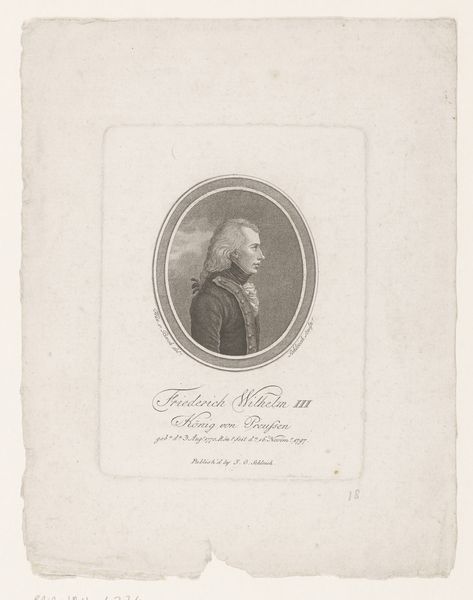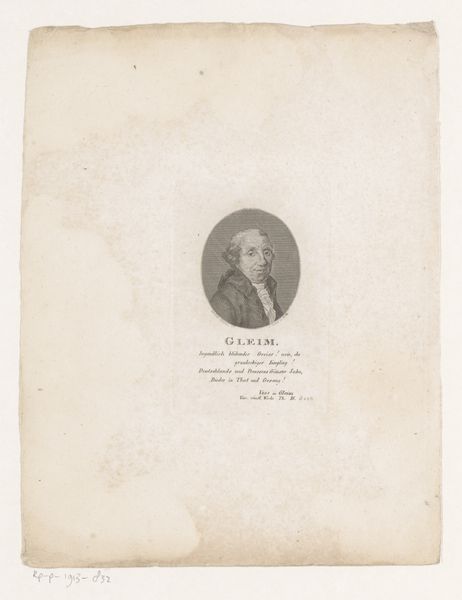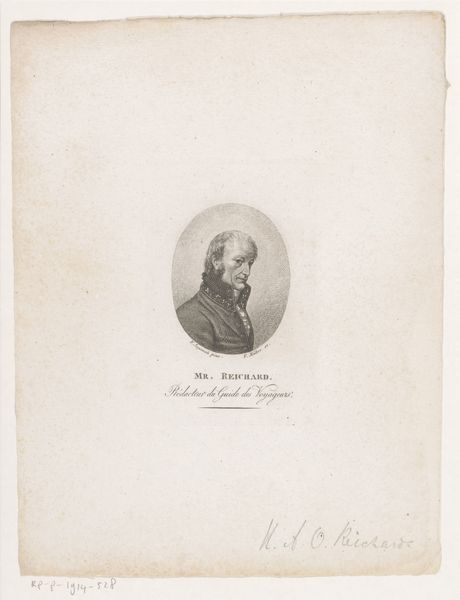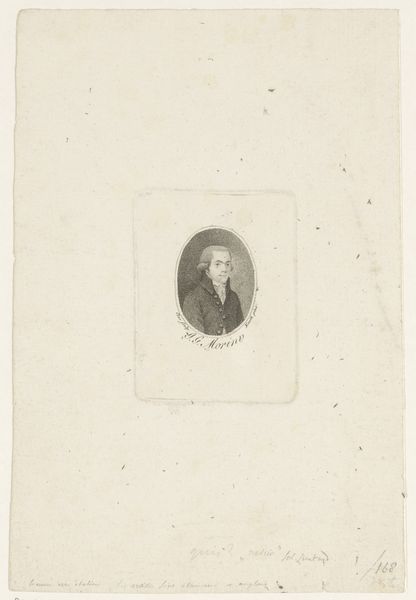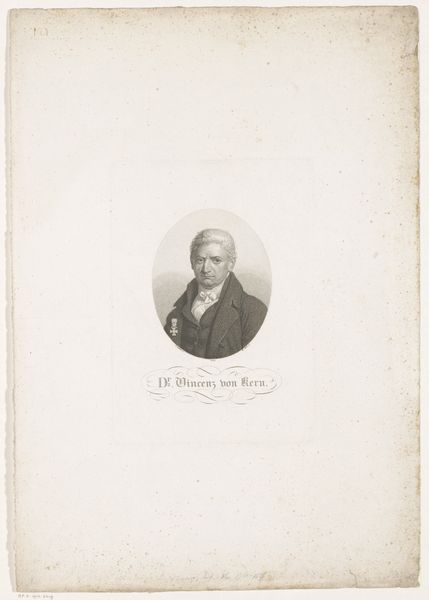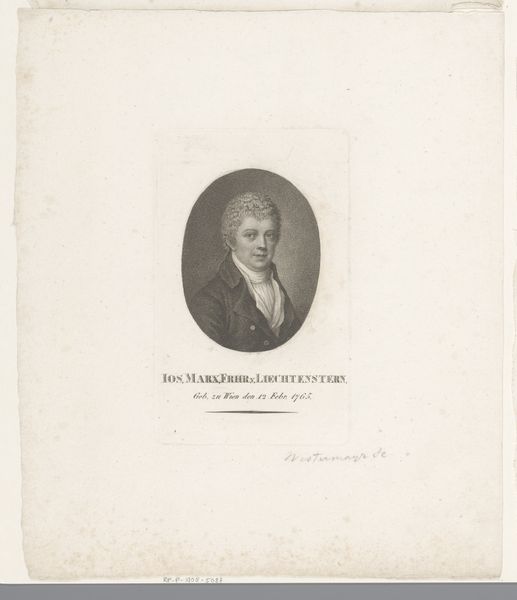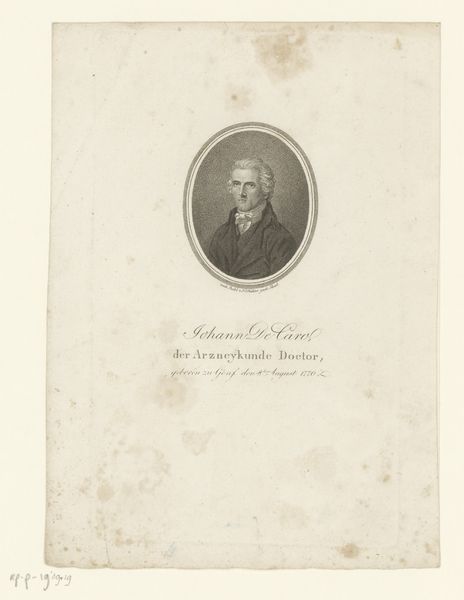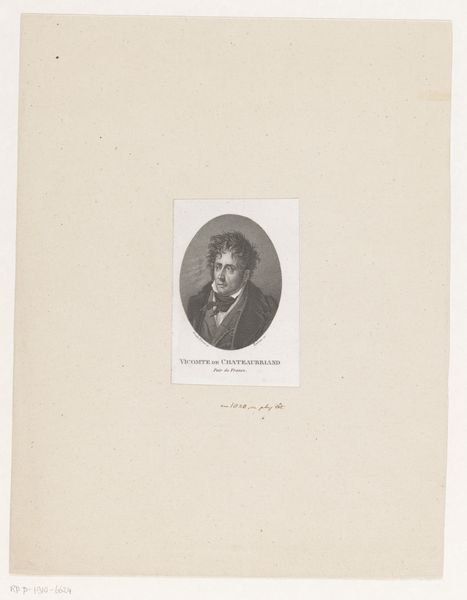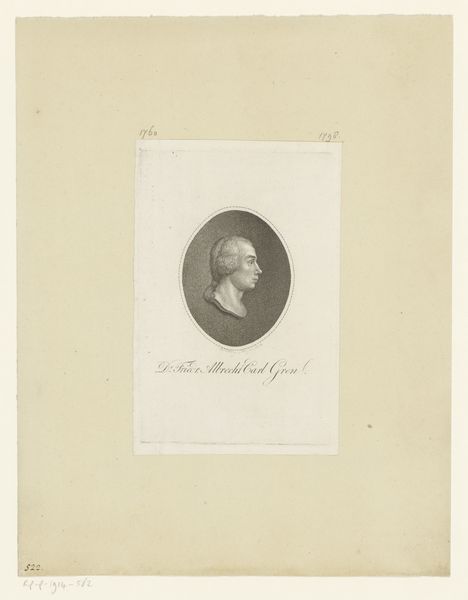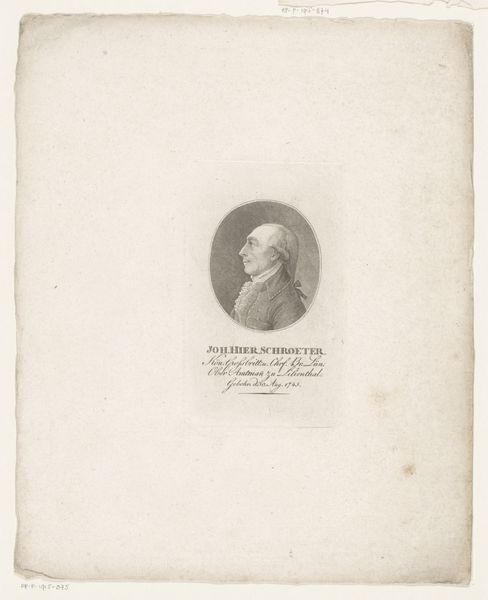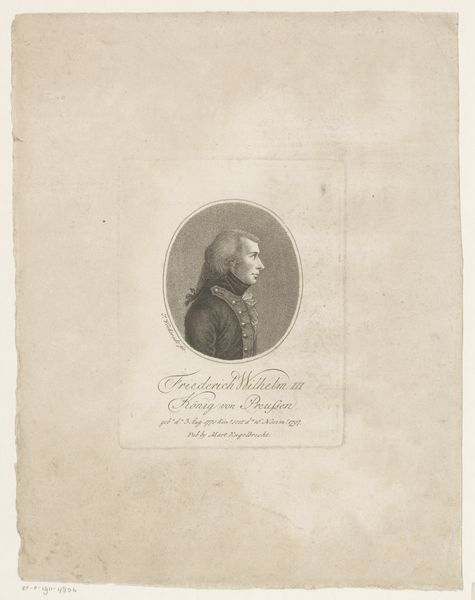
lithograph, print
#
portrait
#
neoclacissism
#
lithograph
# print
Dimensions: height 255 mm, width 197 mm
Copyright: Rijks Museum: Open Domain
Curator: Good morning. Today, we're looking at a lithograph print currently housed in the Rijksmuseum: "Portret van Jacques-Louis de Pourtalès," dating from around 1814 to 1835 and attributed to Louis Léopold Robert. Editor: Immediately striking. The subdued grayscale palette amplifies the starkness of the portrait, and its oval format concentrates focus beautifully, doesn't it? Curator: Absolutely. Note how Robert uses the lithographic process to achieve subtle tonal gradations, emphasizing the play of light and shadow. The artist expertly models de Pourtalès’s face, giving form to the Neoclassical ideals through precise draftsmanship. We must recognize that the support serves as an active and important visual element of the piece and can't be separated from the final print; what observations can you make on this detail? Editor: The aged, cream-toned paper support whispers stories of material limitations of early lithography. Given that these portraits would have been copied and redistributed among communities, that aspect of reproducible manual labor feels particularly central to the viewing experience and interpretation. There would've been so many workers generating these images! Curator: That brings us to an important point. This print reflects more than technical execution. Robert strategically aligns it with a specific Neoclassical aesthetic which becomes visible as part of his formal considerations and stylistic presentation choices, echoing ancient statuary while embracing industrial replication. How does that square within the larger discourse around class and patronage? Editor: It becomes more about democratizing portraits via the mass production process; that removes exclusivity from artwork accessibility which directly opposes what would have been enjoyed by the sitter. Here is this noble face, ready to be enjoyed on many different walls, shelves, and so on... Curator: Indeed. These reproductive methods complicated how viewers in the nineteenth century related to artistic value. Its success relied, in no small measure, on these very factors of social positioning and modes of viewership and consumption! Editor: Fascinating. It provides a very unique tension, indeed, when trying to understand the purpose of producing these types of artworks within a given historical period. Curator: Quite so. Examining it further should only sharpen your impression of lithographic print as a reflection on cultural and artistic transitions of its era.
Comments
No comments
Be the first to comment and join the conversation on the ultimate creative platform.
